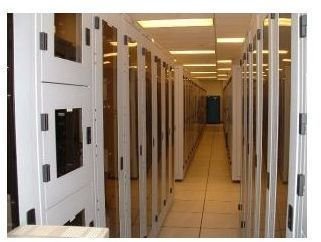Thin Clients vs. PCs (Thick Clients): A Comparison
What are Thin Clients?
In a client-server environment, the server processes requests from the client. Once processed, the request is then sent to the client machine. This paradigm is usually used with websites or other web-based services, which are mostly data-intensive. There is processing involved of course, and it varies between applications.
Clients initially were full-blown computing nodes in their own right, with the capabilities to run applications on their own. However, as networks grow larger, and the number of clients increase, this setup works out to be expensive and somewhat unnecessary.
With fully fledged client machines, chances are resources are getting wasted. Even if a client has the potential to perform a certain task, it may not be doing so at all – therefore that resource is wasted. However, if the clients had fewer features, and relied more heavily on a server computer, no resources would be idle. A client machine, which is not fully equipped, is known as a thin client.
PC vs. Thin Client
PCs, known in this context as thick clients, are fully featured machines as compared to thin clients. There are a number of differences between the two, as listed below:
- The first consideration when choosing a thin or thick client is the cost factor. Evidently thin clients are a lot less expensive, as they usually contain less hardware than thick clients. Even in terms of indirect costs, like maintenance or power, a thin client will put less strain on a budget than a thick client.
- Thin clients rely very heavily on servers; this means that most of their functions are entirely processed on the server itself. If anything were to happen to the server, even for a short period of time, the thin client would be rendered practically useless. In the case of a thick client, if the server was not working, the client itself could function independently for a while at least, if not indefinitely.
- In extension to the previous point, the kind of support required by a thin client from the server is far more substantial than that required by a thick client. Repeated service requests are required for the smallest of tasks, and that has a negative impact on the traffic in the network. If there was a server dedicated to just servicing thin clients, the case would be different, however the scenarios would need to be weighed to arrive at an informed decision, depending on the circumstances.
- Thin clients are certainly easier to set up as compared to thick clients. The server software merely has to be assessed on the machine, rather than installed and configured.
- Potentially older computers with lower configurations could also be turned into thin clients, which is not possible with thick clients at all.
Conclusion
There are a number of factors to consider when deciding to choose a thin client or a PC. Cost considerations are perhaps the first in line, as the setup must fit within a budget. A thin client setup is not always best, and the environment and requirements must be analysed thoroughly before a decision is reached.
